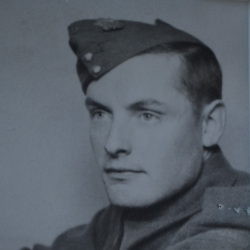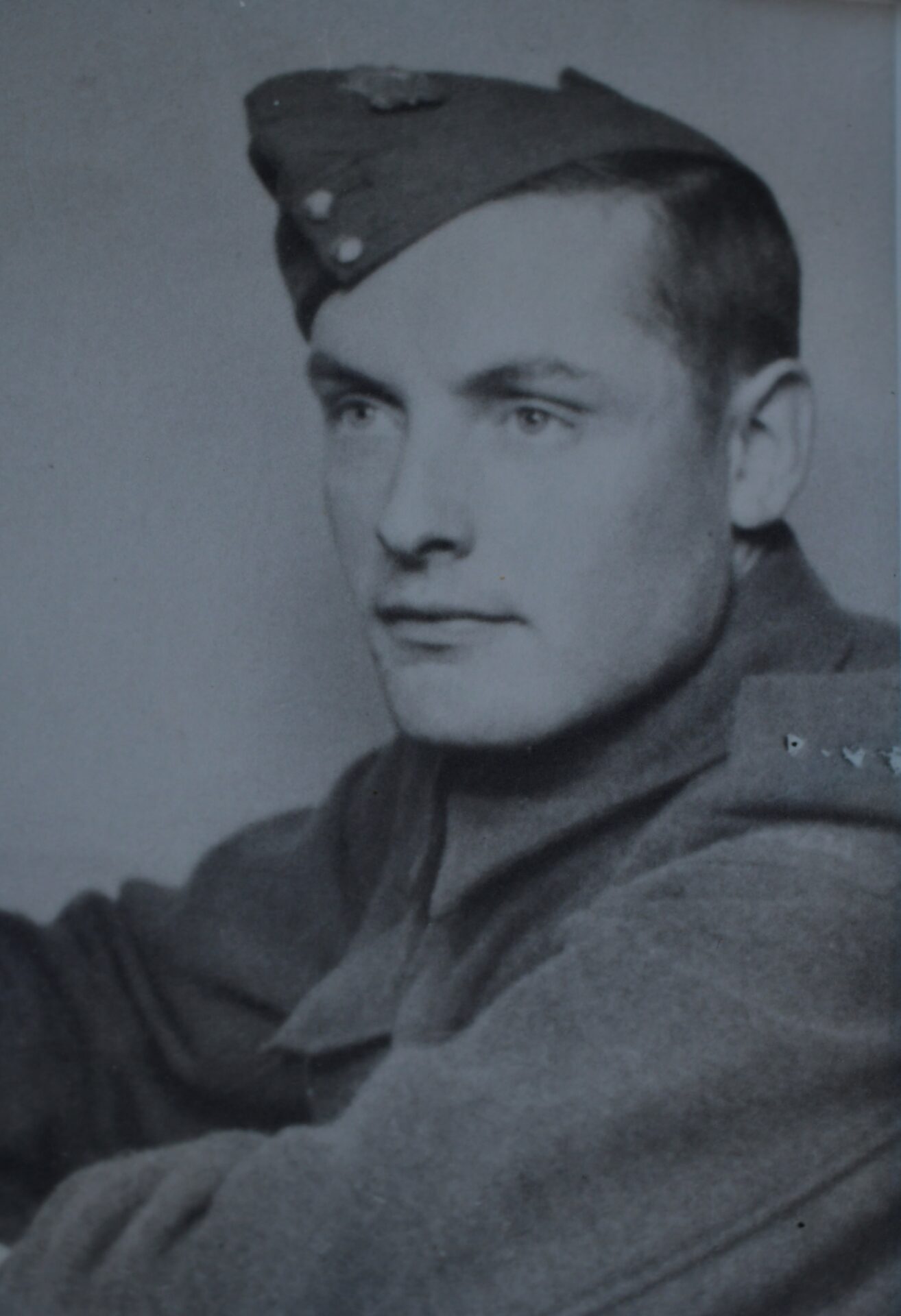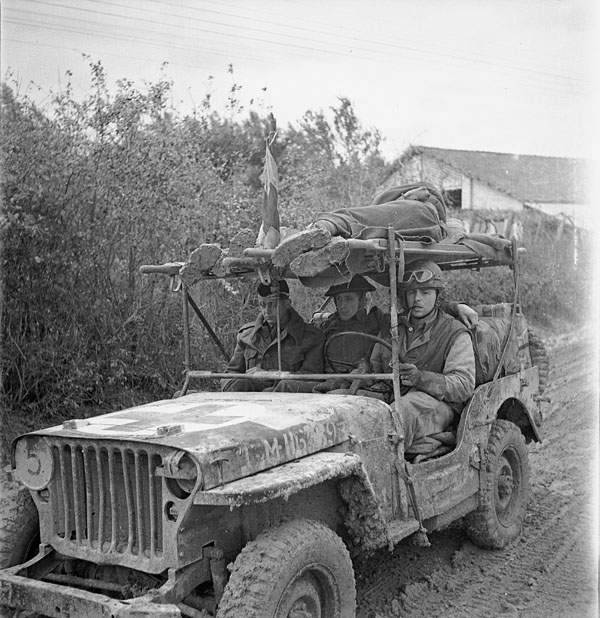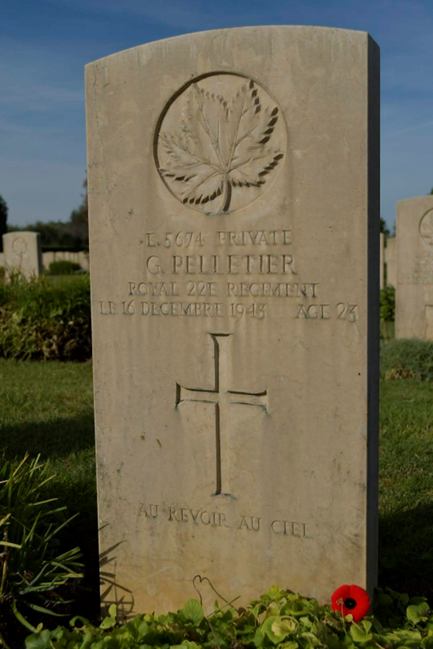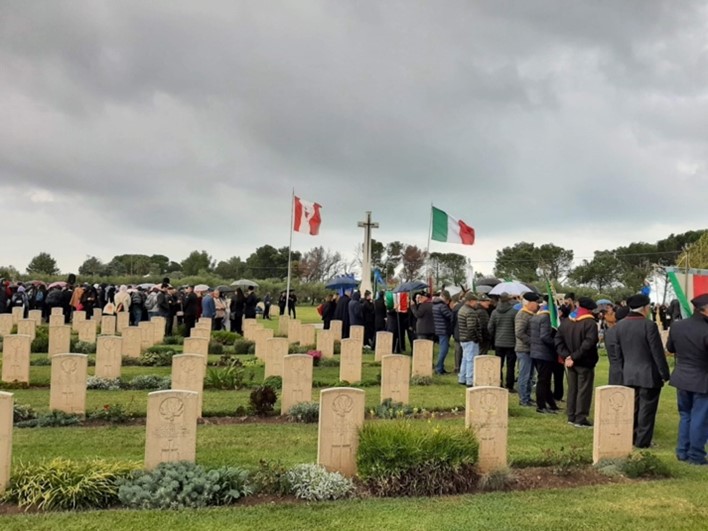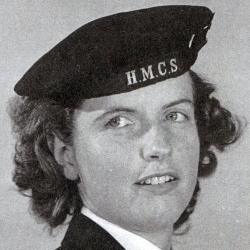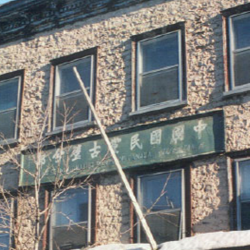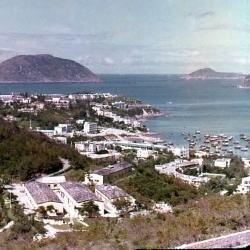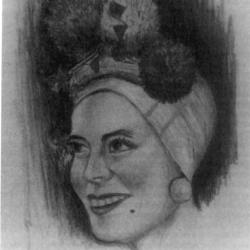This article was published as part of our exhibition on the Italian Campaign: Through Mines and Vines.
Visit our exhibition to learn more about the history of the Canadian soldiers and nurses sent to Italy!
Years ago, my mother told me she had an uncle who died in the Second World War. That was all I knew about him, until about a year ago, when I went in search of his story. It was somewhat by chance that I found the place where he is buried, as well as his military records. By searching online archives and talking to our extended family, my mother and I were able to piece together part of his story. So here it is.
Joining the Army
Gérard Pelletier was born on January 27, 1919 in Sainte-Félicité de L’Islet, a small village in the Chaudière-Appalaches region. Gérard liked to do pranks and get into fights, according to family members. He probably took his interest in the Canadian Armed Forces from a neighbor’s family member, who was a soldier. Indeed, Gérard loved trying on his uniform and was saying that it was his dream to be in the army.
In the winter of 1939-40, Gérard left for the United States to work as a lumberjack, like many other French Canadians at the time. Upon his return in the spring, he began planning his enrolment. My great-grandparents, Delvina and Joseph Pelletier, suspected that Gérard had a plan, but hoped he’d get over the idea of joining the army. One morning, they asked their other son, Léopold, to go and wake Gérard, but he was gone. He had left at night, and a man from a neighboring village had taken him to Tourville to catch the train to Quebec City. Gérard never came home.
After leaving Sainte-Félicité, Gérard went to the Citadelle de Québec, where he enlisted with the Royal 22e Régiment on May 14, 1940. According to his military record, he had about completed his education up to Grade 4, and wanted to be a clerk after the war.
Gérard spent his first two months in the Army training at Valcartier, before being shipped off to Glasgow, Scotland – like many other Canadian regiments. He thus spent the years 1940 to 1943 in the United Kingdom, notably in the town of Bordon, where he continued his training. As a sign of his qualities as a soldier, he was awarded a badge for good conduct in May 1942.
On June 15, 1943, Gérard embarked for Italy. He landed at Roger Beach, Sicily, on July 10, 1943. This was the start of Operation HUSKY.
The Italian Campaign
By consulting the Canadian Armed Forces’ official history of the Italian Campaign, as well as my uncle’s military file, I tried to reconstruct his journey in Italy. I believe he was in Company B of the Royal 22e Régiment. He would probably have had his first taste of battle in Sicily. Indeed, according to the war diary of the Royal 22e Régiment, on July 18, Company B came under mortar and machine-gun fire. Despite this, Gérard’s company held its position and, as reported: « Though this is the unit’s first battle all ranks conducted themselves as veterants [sic] of many a battle and many are recommended for acts of bravery and devotion to duty. »
Use the interactive window below to explore Gérard Pelletier’s journey through Quebec, Great Britain and Italy with more information (we recommend using full screen for a better experience).
Having fought valiantly for the liberation of Sicily, the troops of the First Canadian Division then prepared to continue the fighting with an attack on mainland Italy, starting in the south. Gérard was wounded on August 3, 1943, just before leaving Sicily for mainland Italy. Around that time, soldiers were practicing for their landing on the beaches of the Italian mainland, but lacking the necessary resources, they used rocks and branches to simulate the boats they would use. Several soldiers were injured during these exercises; I believe Gérard was one of them. He remained out of action until October 1943, when the Royal 22e Régiment was in the vicinity of Campobasso.
The Campobasso area, and the route the Allied forces had to follow to take control of Italy, were mountainous. At that time of year, it often rained, swelling the rivers. In addition, all bridges were either destroyed or heavily guarded by Nazi forces. This meant that troops had to use long, muddy detours to get around.
Take a moment and try to imagine. In 1943, the war has been raging for four years. You’ve been fighting in Italy for five months, marching all the way from southern Italy. The equipment and clothing at the time were not what they are today. When it rained, it’s highly likely that the soldiers were soaked to the skin. At this time of year in Italy, the weather is rainy and cold. You’re cold and wet. You’re walking up and down a slippery, sloping, muddy path, with several kilos of gear in your rucksack. You have to remain vigilant and keep an eye on everything going on around you, in case the enemy had set an ambush. Despite all this, the soldiers of the Royal 22e Régiment, like those of other Canadian, New Zealand, Indian and British regiments, continued to advance and fight to liberate Italy, regardless of the weather and adverse conditions.

The capture of Casa Berardi on December 13 and 14 marked a turning point in the effort to take the town of Ortona. Nazi communications at the time detailed their lack of ammunition and supplies, and the impossibility of holding out without reinforcements following this attack. The Allies’ next aim was to capture Ortona itself, which was in a strategic position. As well as being directly east of Rome, the town is located on a rocky promontory and has a deep-water port. This made it easier to defend the city, and allowed for the delivery of supplies to the troops. These supplies were essential to feed and equip the troops with the weapons and ammunition they needed. If Ortona had not been captured, supplies would have had to land in the south of the country, and make their way up the peninsula along roads damaged by retreating enemy troops.
Following the capture of Casa Berardi, Company B of the Royal 22e Régiment and the Carleton & York Regiment were tasked with protecting the Canadian positions. On the morning of December 15, they were to attempt an advance along the road to Ortona, supported by artillery. Unfortunately, there was a communications problem and no way to warn or stop the artillery. Instead of bombarding the enemy forces, it was Company B that came under fire, with heavy casualties. The enemy then took this opportunity to attack the Canadians, while blocking the other companies. It was only in the early afternoon, when the enemy attempted a counter-attack, that the troops were able to move to cover and the artillery was able to fire again.
Gérard’s file indicates that he died on December 16, 1943, but the date 16 is written over a crossed-out entry for December 15. The file doesn’t say what my uncle died of. I believe he was with the soldiers of B Company on December 15, 1943, and that he was seriously wounded. According to the regimental diary, after all, 21 wounded were evacuated as soon as casualties were assessed. If Gérard wasn’t one of these early evacuees, it’s possible that he would have been found later. Perhaps the medical team on site anticipated that he would die of his wounds the same day, and yet he survived until the following day? My other hypothesis is that he might have survived the artillery fire, but was seriously wounded in the fighting later that day and died the following day.
At the time of his death, Gérard was earning $1.50 a day. He had also bought Victory bonds, probably with his soldier’s pay. Letters written to him by his family have been lost. For a long time, the letters he had written to his family back in Canada remained in the attic at my maternal grandmother’s house, but it seems that they too have now disappeared. Today, only a few photos of my uncle remain, including one of him with his regiment, and the medals he received.
The telegram announcing his death arrived at my great-grandparents’ home on December 27, 1943, just after Christmas. My great-grandmother Delvina was in charge of the village post office, so she was the first to receive the news. I’m told that when she arrived home, she locked herself in her room; everyone knew immediately that Gérard had died.
Finding Gérard’s Tombstone
Gérard was first buried at Casa Berardi, then transferred to the Moro River Canadian War Cemetery in 1947. That’s where my mother and I went last November.
To my knowledge, only one distant cousin went to Ortona a few years ago to see where my uncle is buried. My mother and I went there in November 2022, to celebrate Remembrance Day.
I’d never been to a military cemetery before. It’s impressive to see all those headstones lined up one after the other. I tried to imagine, if instead of each stone there was a person. What a great gathering it would be.
The people who look after the cemetery do so with great care. The stones, the flowers and the grass are very well maintained. Walking through the rows of stones, you can read the age and city of birth of each person. Many were in their twenties, but a few others were in their thirties and forties.
At the bottom of the stone is the inscription « Au revoir au ciel » (« Goodbye to heaven »). While reading my uncle’s file, I came across a letter from the Department of National Defense giving my great-grandparents the option of choosing the inscription on the stone. This is thus how they would have said a final goodbye to their son. As far as I know, they never made it to Italy to see where he was buried.
Neither my mother nor I knew this when we decided to go to Ortona that year, but the town was also inaugurating a new monument to Canadian soldiers on Remembrance Day 2022, in addition to the ceremony at the Moro River cemetery.
On the morning of November 11, we joined the inauguration ceremony of the Piazza dei Eroi Canadese, « Canadian Heroes’ Square ». Many people were present, including the Canadian ambassador to Italy.
We then went to the Moro River Cemetery for the Remembrance Day ceremony. Around a hundred people, Italian veterans and students from local schools were at the ceremony at the Moro River Cemetery.
This year, 2023, marks the 80th anniversary of the Battle of Ortona.
They shall grow not old, as we that are left grow old:
Age shall not weary them, nor the years condemn.
At the going down of the sun and in the morning
We will remember them.
They were young, as we are young,
They served, giving freely of themselves.
To them, we pledge, amid the winds of time,
To carry their torch and never forget.
We will remember them.
– Act of Remembrance & the Commitment to Remember

Article written by Catherine Dion-Gagnon For Je Me Souviens. We would also like the Royal 22e Régiment Museum for their help in writing this article. Translated by Marina Smyth.

